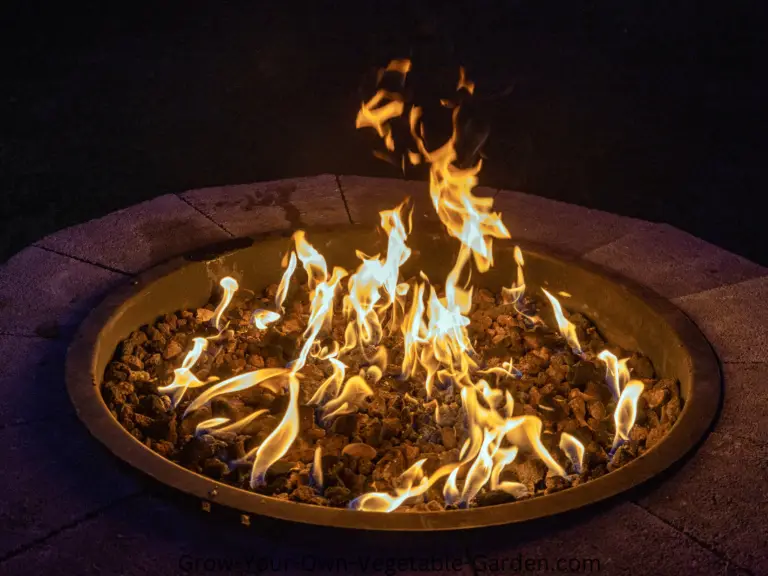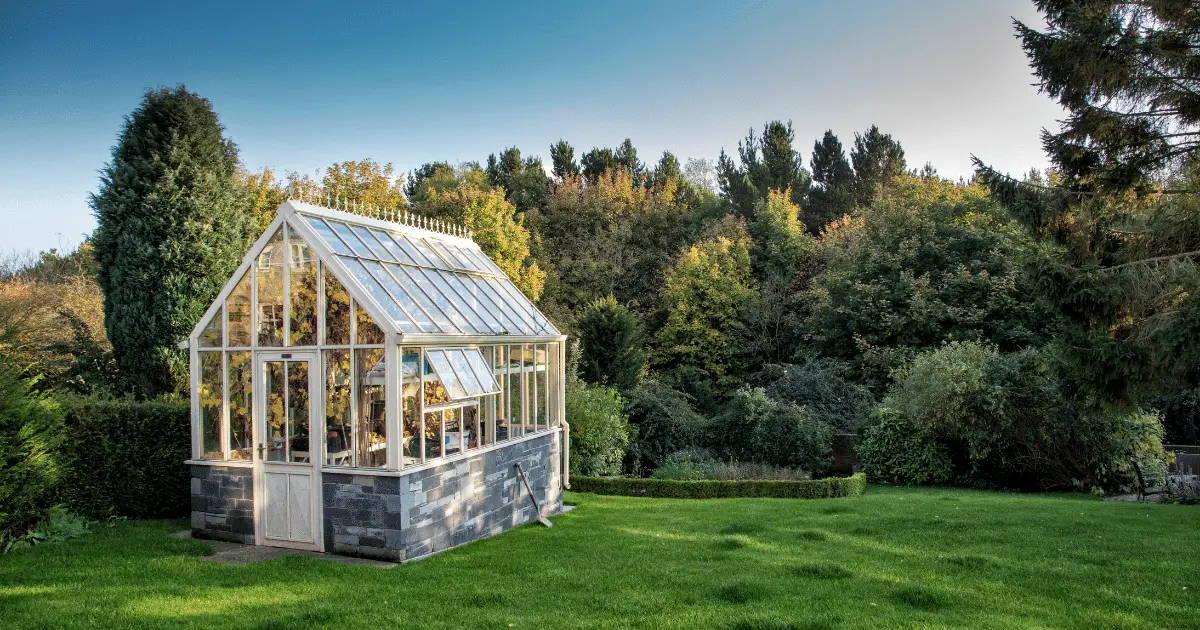
How To Choose A Greenhouse
Types Of Greenhouses
So you’re looking for a greenhouse? But of all the types of greenhouses, which do you need – a big one, a small greenhouse, a polycarbonate greenhouse or a wooden one? What is the best type of greenhouse for you?
If you’re serious about growing your own vegetables and fruit then a greenhouse is a very useful item to have and for some of the plants you may want to grow, dependent upon where you live, then a greenhouse may well be absolutely essential. They can also be very expensive and a bit of a pain to get in place and set up properly so it’s important that you know what you’re looking for so you can choose the right solution for your needs.
So a greenhouse is a greenhouse right? Well as with everything in life it’s not quite that simple and you’re going to be met with a number of options so let’s take a look at them.
Do I Really Need A Greenhouse?
Well this is entirely dependent upon where you live, what your climate is like and exactly what you want to grow so is really a question you have to answer for yourself but don’t underestimate the importance of greenhouses.
If you do need a more sheltered environment for your seedlings, tender plants or over wintering then consider if you need a full structure or if one of the following types of greenhouses might suit your needs.
Polytunnel – This is a really flexible alternative to a greenhouse. They are generally made from shaped steel and covered in polythene sheet to produce a similar effect as a greenhouse. They are really easy to construct yourself for very little cost and are flexible enough that you can make them as little or large as you like. You don’t need to worry about bases or footings for these but the downsides are they are not as sturdy as a greenhouse, they don’t hold heat well in the winter and they are fairly ugly to look at.
If you want to buy a ready made one then something like THIS is available on Amazon.
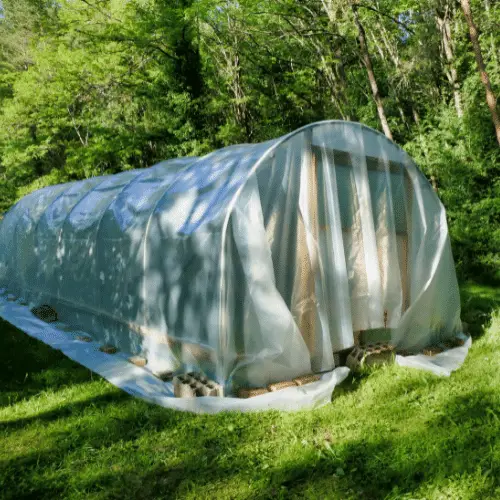
Coldframe – These are essentially really small greenhouses. They are easy to fabricate yourself, generally consisting of a small brick or wooden structure, topped with a glass or polycarbonate lid to allow the light in. They can sit low to the ground or be little higher, coming up to chest height, allowing some shelves or storage to be added underneath. These are a fantastic option for those limited on space and if you don’t want to make your own then plenty of commercial varieties are available.
THIS wooden framed option is ideal.

Potting Shed – A great solution for those who are limited on space and need both a shed and greenhouse. These generally come in two main styles of either a shed with an integral lean-to greenhouse on the side but both remain separate spaces or they will come as one space which is a shed with one half normal construction and large amounts of glazing in the other half to create an effect similar to a greenhouse.
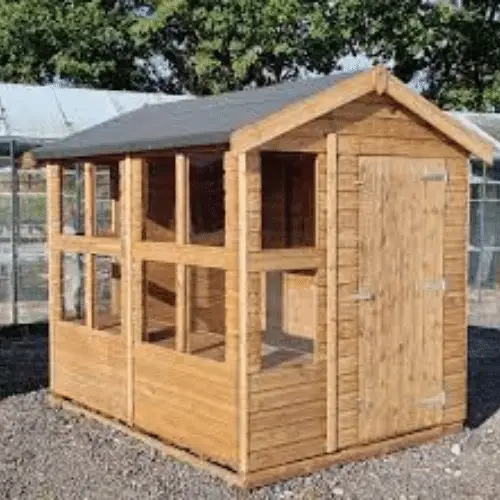
Positioning And Size
Now that you have decided you need a greenhouse of some type, the first question you have to answer is where exactly are you going to position it as this will then determine the sizes and shapes you can consider. Some thought needs to go into positioning and that is a whole separate article in of itself so for the purposes of this article we are going to assume you know where it’s going and what you need to do to set it all up.
So now you need to consider the size you are going for and other than the space available, the other major factor in this decision is cost. Obviously, the bigger you go the more expensive it will get.
You are going to have a huge array of size options open to you and our advice would be to get the biggest you can afford and have space for. Whatever size you go for, you are going to manage to fill it some how and will always yearn for a little more space.
Greenhouse Shapes And Styles
Lean To Greenhouse – The greenhouse is constructed against an existing wall on your property. These can be created in the style of a conservatory with a low level brick wall constructed and the greenhouse frame sitting on top and as such can be constructed to fit well with the aesthetics of your house. These have a number of main advantages in that they can be visually pleasing, take up less space or use otherwise unusable space, the brick wall of the property helps retain heat and as such can act almost like a storage heating system through the night. Additionally if you can construct it so that an external door of your property opens straight into it then you don’t even need to go outside to enter it.
Some disadvantages are that it will naturally have lower light levels than a traditional greenhouse and some extra care has to be taken over positioning.
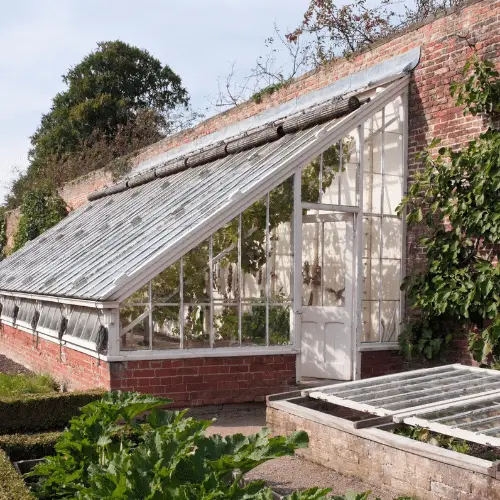
Traditional Freestanding – A freestanding structure, generally with a square or rectangular floorplan, these greenhouses let in light from all sides and offer lots of practical and usable space. These are the most popular style and will have the widest range of options available to you.

Octagonal / Dome Freestanding – Again a freestanding structure but with a variety of different floorplans. These are generally attractive features for your garden and still come in a variety of sizes. The downside can be that unless you’re getting a fairly large one then it’s difficult to get the best use out of the space inside due to the shape and layout.
- Greenhouse Material
This is the material the frame of the greenhouse is constructed from and you have two choices here;
Wood – Generally made from cedar, a hard wood, but can use other types of wood.
Pro
- More attractive then the metal counterpart
Creates a more rigid overall structure
Timber has insulation properties so they can maintain a more constant temperature
Con
More expensive than metal counterpart
Heavy
Timber will need some form of treatment to prolong it’s lifespan
Metal – Generally made from aluminium.
Pro
Cheaper than the wooden counterpart
Lightweight
Durable as does not rust and powder coating can help prevent oxidisation
Colour options now available due to powder coating
Con
Not as attractive as wood options
Aluminium will oxidise if not powder coated
Frame not as rigid as wooden frame
Greenhouse Glazing Material
There are three choices when it comes to what material you use for glazing.
Horticultural Glass – This is going to be your cheapest option and is easy to source and replace if broken. It let’s in lots of light so is ideal for a greenhouse but it will break easily and can be quite dangerous as it will splinter into shards.
Toughened Safety Glass – Whilst this is a more expensive option than the horticultural glass it is still easy to source and replace if broken. It still let’s in lot’s of light, is much harder to break and when it does break it shatters into much smaller pieces so is nowhere near as dangerous.
Polycarbonate – This is set out in a similar fashion to double glazing, providing good insulation properties and is by far the safest and the most difficult to actually break. It is however the most expensive of the options and although it allows good light penetration it is still not as good as the other two options. The cavity can also allow water ingress over time, resulting in algae build up and discolouration in the pane. Another big drawback is that the material is more flexible so is more likely to be blown out in high winds.
In Summary
Your main option when picking your greenhouse is primarily going to be how big you have it and for this we would always advise to go as big as you can. You need to decide if you’re building it against a pre-existing wall or if it’s going to be freestanding and what shape suits your needs.
You then need to think about what material you want it constructed from with wood being the more attractive and rigid option but with metal arguably having more longevity and being cheaper.
And then you need to consider what glazing you’re using – we use polycarbonate in the garden for safety reasons as we have children but then toughened safety glass on the small holding.
So there you have it, a whole heap of considerations for you with and your two main driving factors are most likely going to be how much space you have and how much money you want to spend.
You now should be able to work your way through the options and make an informed decision on what is going to suit your needs.



